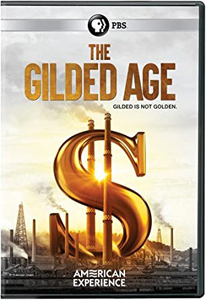 The Gilded Age (2019)
The Gilded Age (2019)
Perhaps there's some bitter consolation in this two-hour PBS documentary to the effect that our economic disparities in wealth and income today are not new, and that they have a disturbing precedent. This fascinating economic history considers what we now call "The Gilded Age" of the last three decades of the 19th-century, which was a period of rapid growth, immigration, urbanization, and industrialization. "Gilded" suggests a patina or exterior covering that masks something ugly or even rotten underneath. We're introduced to the mind-boggling concentration of personal wealth, extravagant consumption, and political power of the Carnegies, Rockefellers, Vanderbilts, and especially JP Morgan. The expanding economy required "the working class" for the factories and farms. These people worked long hours with little to no support or protection, and thus the rise of the labor unions, boycotts, strikes, left-wing political parties, the first-ever march on Washington, and Henry George's 500-page self-published best seller: Progress and Poverty, An Inquiry Into the Cause of Industrial Depressions, and Increase of Want with Increase of Wealth: The Remedy (1879), which argued that the cause of poverty was not God's will or bad character, but a faulty economic system. And so the film ends with a question that is still with us: what is the role of the federal government in its relationships with big business and ordinary citizens?
Dan Clendenin: dan@journeywithjesus.net


